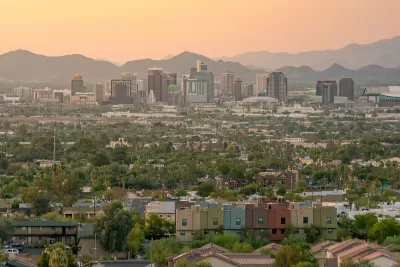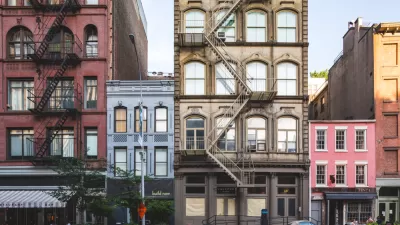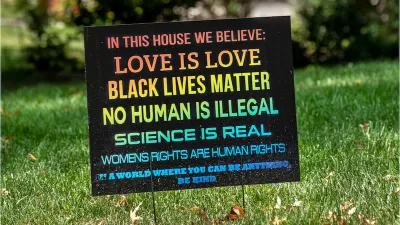A critical question arises in response to an affordable housing project proposed in Phoenix: When measuring a project's affordability, does the larger county's median income matter when some neighborhoods are struggling well beyond that measure?

"A developer plans to build 161 mixed-income apartments and 64 townhomes in south Phoenix where residents can work toward ownership, but critics say say [sic] the homes aren't affordable enough," reports Megan Taros.
Here's how the affordability of the proposed development breaks down in context of Phoenix's economic conditions:
The project, by Chicanos por la Causa, has promised that 10 of the units will go to residents earning 30% to 60% of Maricopa County's median income of $77,800 for a single family.
Eligible renters are capped at 60% of this area median income, making it 100% affordable according to U.S. Department of Housing and Urban Development standards.
But many residents in the neighborhood make far less than the project's asking prices. The average median income for residents in the 85040 ZIP code, where the project is proposed, is less than $39,000 a year, according to American Community Survey data cited in the article.
With light rail expected to arrive in the neighborhood by 2024, local activists are predicting that the project is a sign of gentrification to come. "SoPho Convening, a community organization dedicated to equitable economic development, and residents asked the Phoenix City Council in July to delay approval to allow Chicanos por la Causa to work with stakeholders in the project," according to Taros.
The project has achieved mixed success during the planning approvals process. The South Mountain Village Planning Committee voted to reject the project, but the Phoenix Planning Commission voted to approve.
FULL STORY: Affordable housing coming to south Phoenix, but residents say it’s not affordable enough

Alabama: Trump Terminates Settlements for Black Communities Harmed By Raw Sewage
Trump deemed the landmark civil rights agreement “illegal DEI and environmental justice policy.”

Planetizen Federal Action Tracker
A weekly monitor of how Trump’s orders and actions are impacting planners and planning in America.

The 120 Year Old Tiny Home Villages That Sheltered San Francisco’s Earthquake Refugees
More than a century ago, San Francisco mobilized to house thousands of residents displaced by the 1906 earthquake. Could their strategy offer a model for the present?

In Both Crashes and Crime, Public Transportation is Far Safer than Driving
Contrary to popular assumptions, public transportation has far lower crash and crime rates than automobile travel. For safer communities, improve and encourage transit travel.

Report: Zoning Reforms Should Complement Nashville’s Ambitious Transit Plan
Without reform, restrictive zoning codes will limit the impact of the city’s planned transit expansion and could exclude some of the residents who depend on transit the most.

Judge Orders Release of Frozen IRA, IIJA Funding
The decision is a victory for environmental groups who charged that freezing funds for critical infrastructure and disaster response programs caused “real and irreparable harm” to communities.
Urban Design for Planners 1: Software Tools
This six-course series explores essential urban design concepts using open source software and equips planners with the tools they need to participate fully in the urban design process.
Planning for Universal Design
Learn the tools for implementing Universal Design in planning regulations.
Clanton & Associates, Inc.
Jessamine County Fiscal Court
Institute for Housing and Urban Development Studies (IHS)
City of Grandview
Harvard GSD Executive Education
Toledo-Lucas County Plan Commissions
Salt Lake City
NYU Wagner Graduate School of Public Service





























